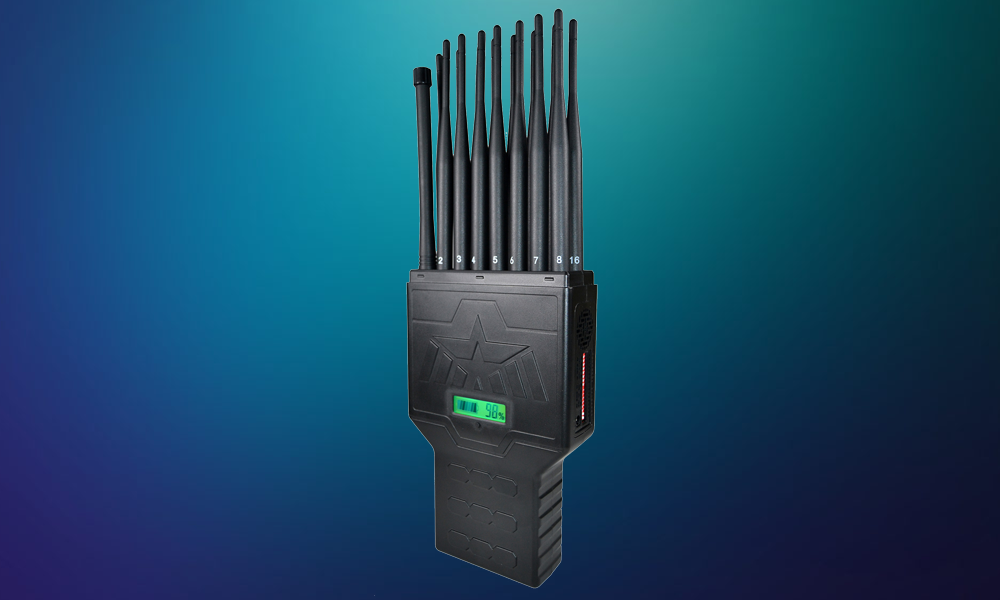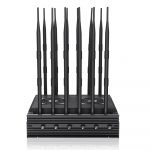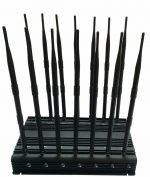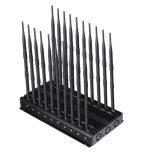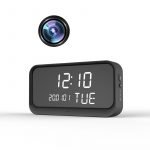How Does a Cell Phone Jammer Work?

If you’ve ever wondered how a cell phone jammer works, you’re not alone. A cell phone jammer works by blocking communication between cell phones and wireless towers. Some even use them in churches and temples to block mobile phone signals. Regardless of what you’re using your cell phone for, it may be able to interfere with it. Read on to learn more. Here are some ways it can disrupt radio communication:
Disrupts radio communication
A cell phone jammer is a device that disrupts radio communication. Typically, it works by blocking calls and incoming messages. Once turned off, it returns the full service. Some jammers are even capable of shutting down cellular service up to a mile away. The exact mechanism of a cell phone jammer depends on how strong the signal is in a particular area. Here’s how one goes about testing the effectiveness of a jammer.
Cell phones communicate with the cellular service network via a cell tower. A jamming device works by broadcasting a signal on the same radio frequencies as cell phones. This causes the signal from the cell phone to be lost, making it appear that it has no service. This is known as a denial-of-service attack. Depending on the frequency of the signal, the device will either disable the cell phone or cause it to experience a slow or erratic connection.
Blocks calls
In the U.S., cell phone jammers should be illegal to use. A recent incident in Florida exposed the dangers of cell phone jammers. For example, they can interfere with the signal of emergency pagers. According to the Federal Trade Commission, 118,000 emergency calls are made on cell phones daily. In these situations, the presence of a cell phone jammer can make it difficult or impossible to call emergency services or 911.
The devices that interfere with cell phone signals work by overpowering them by transmitting a signal on the same frequency and high enough power. However, cell phones use two frequencies – one for talking and one for listening – which means that jammers have to match the power increase of the cell phone. Some jammers block only one frequency, while others can affect both frequencies at once. In this way, they are effective for blocking calls and messages from both parties.
Interferes with GPS
How does a cell phone jammer interfere with GPS? The most obvious reason is to block the GPS signal. However, this is not always possible. If your jammer interferes with GPS, the system cannot accurately pinpoint your location. Cell phones use Wi-Fi-based locations to pinpoint their positions. In fact, many smartphones now come equipped with accelerometers. However, the problem is that the location knowledge on the cell phone is imperfect. This jammer also makes GPS useless, as cell phones are not capable of using this information to determine their position.
Thankfully, the government has taken steps to reduce the potential for these jammers to disrupt navigation. In 2007, two ships operated by the U.S. Navy jammed the GPS signal in San Diego harbor. They were testing procedures in case of a communications failure. This incident disrupted cellular phone service, ATM machines, and hospital pagers. Because GPS provides accurate locations, jamming GPS can affect the safety of an operation.
Interferes with WiFi
If you have an Internet connection and are worried about WiFi interference, you need to know how cell phone jammers work. They block network signals, which interfere with the use of wireless devices. These devices can also interfere with the signal of WiFi mini signal blockers. WiFi mini signal blockers have 4GHz frequency bands, which are cheaper than the ones with 5GHz frequency bands. You should be aware that these devices violate federal laws and are traceable.
A typical cell phone jammer can block signals from up to 30 feet away, but this is not effective in all locations. The signal strength in a specific area is also crucial. The best jammers are designed to work at a range of 30 feet, so they’re only effective if they’re close to the signal source. However, some jammers are designed to block signals over a much wider area.
Interferes with police radar
Several factors contribute to the interference with police radar, such as cell phones, GPS, WiFi, and radio frequencies. Interference occurs when two radars near each other operate on the same frequency, causing the radar to erroneously register a speed. Radar operators may experience “running rabbits,” or their radar display scope might become cluttered and unreadable. Ground radars do not operate near each other close enough to cause this type of interference, but radars used in airborne systems often interfere with each other. However, frequency-shifting transmitters can eliminate this kind of interference.
The use of a cell phone jammer to block radar signals is not recommended by law enforcement authorities. The FCC regulates radar frequencies. It is illegal to broadcast an unlicensed device on police radar frequencies, and violating these rules could result in fines of $50,000 or more, as well as possible jail time. While the FCC is unlikely to approve your radar jammer, it does make it illegal to advertise it.
Is illegal in the USA
A recent TV report from Philadelphia’s NBC10 exposed a man who had been using a cell phone jammer in a public bus. He confessed to using the device, and called the people on the bus using their phones rude and annoying. The story gained national attention over the weekend, and “cell phone jammer” was one of the top 10 searches on Google Trends. It ranked up there with news of the Super Tuesday primaries and Lindsay Lohan’s “SNL” performance.
Cell phone jammers are illegal in the USA because they interfere with radio communications. According to the Communications Act of 1934, the interference of radio communications is illegal and punishable by law. It is also illegal to sell or manufacture jamming equipment. Nonetheless, many people use jammers to block emergency calls. The federal government has prohibited its use. If you’re planning to use one, make sure that you are aware of all of the laws that apply to the device.


